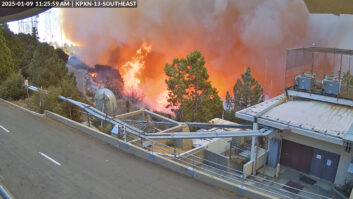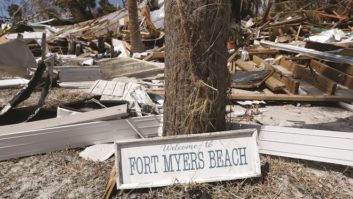Power outages at most broadcast facilities are relatively rare. Across most of Crawford Broadcasting, such outages normally amount to an hour or two a year. In many cases we have none.
A lot of that depends on geography. For example, in areas where thunderstorms are common, we’re prone to more storm-related outages. It also depends on the infrastructure. Areas with really old power grids tend to have more problems than those with newer grid components. Still, outages tend to be short-term.
In one location, however, we’ve had some long service disruptions, even though the area is not known for thunderstorms and has a fairly new power grid, especially the last mile to our facility.
One such outage occurred in late 2024. Starting in mid-November, we received several notices from Southern California Edison (SCE) telling us that for a two-hour period on Nov. 25, the Oak Flat transmitter site of 50 kW AM station KBRT in Costa Mesa would be without utility power so the utility could “upgrade equipment.”
We were well prepared for this outage. We have a pair of identical 70 kW diesel generators at the site. Their fuel tanks were close to full, and we knew the generator was in good working order because our operations manager exercises it every Thursday. So when the power went out on the 25th, the generator started, the transfer switch connected the site to the generator’s 480-volt three-phase output, and the station stayed on the air.
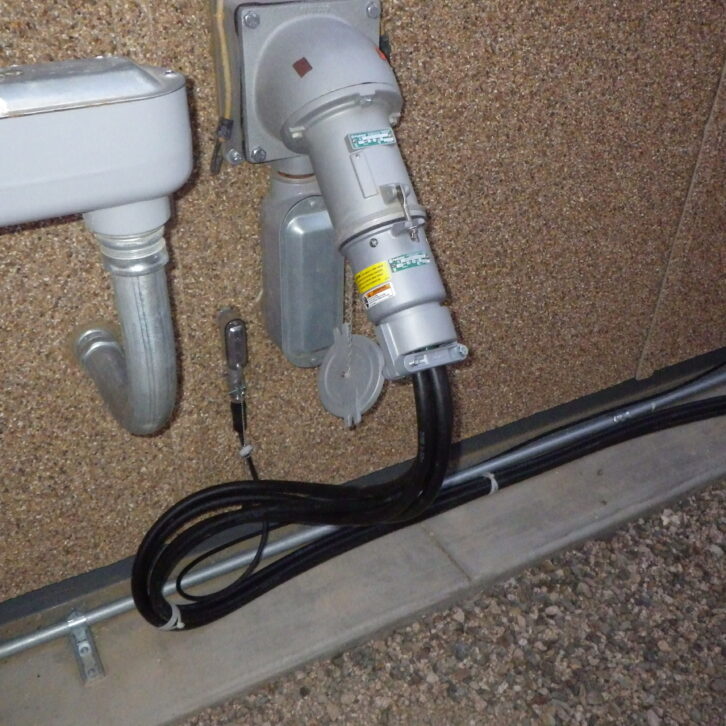
How many days, did you say?
The first indication of trouble came an hour and a half or so later.
I got an email from SCE advising that the work had been completed and our power had been restored. I immediately hit the KBRT remote control system and saw that the “Generator Power” status indicator was lit red. If we’d been back on shore power, the status indicator would have been green and the status text would have said “Edison Power.”
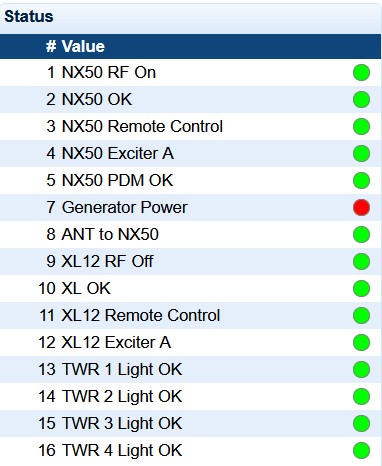
I didn’t think too much about it at the time, figuring that I had checked too soon and that we were still within the time delay on power restoration, which keeps the generator from shutting down too soon if there is a momentary restoration of power that doesn’t stick. It happens sometimes.
But I continued to check that status over the next couple of hours, and it remained showing generator power with a red indication.
I got on the phone with Operations Manager Todd Stickler and told him about it, advising him to submit a trouble report with SCE. Was it possible they had restored power and didn’t know that our site was still down? Todd submitted an outage report.
Not long after we got another email from SCE telling us that power would be restored on Dec. 7.
What? WHAT?!? Dec. 7 was ten days away! Surely that was a mistake.
As time went on, it became clear that it was no mistake. Power remained off, and we got nothing but crickets from SCE.
Todd tried and tried to get in touch with someone — anyone — at SCE who could tell us what was going on. It was not until more than a week later that he finally connected with a real person who told him what we had about figured out on our own: SCE had pulled that piece of equipment, probably a transformer, with the intent of replacing it, but found other issues with the infrastructure and did not have the materials on hand to fix it. I’d heard the same thing through the site manager grapevine, so confidence was fairly high that this was in fact the case.
For 10 days, to keep us operating on generator power, Todd and Stickler and Mike Duffy, the transmitter contract engineer, took turns going to the fuel depot every other day, picking up three 55-gallon drums of red-dyed off-road diesel, hauling it up that five-mile switchback dirt track up to the site and pumping it into the main generator tanks. It took two refueling trips every other day, 165 gallons per trip, to keep the generator fueled. We figured that we were burning an average of three gallons per hour, 75 gallons a day.
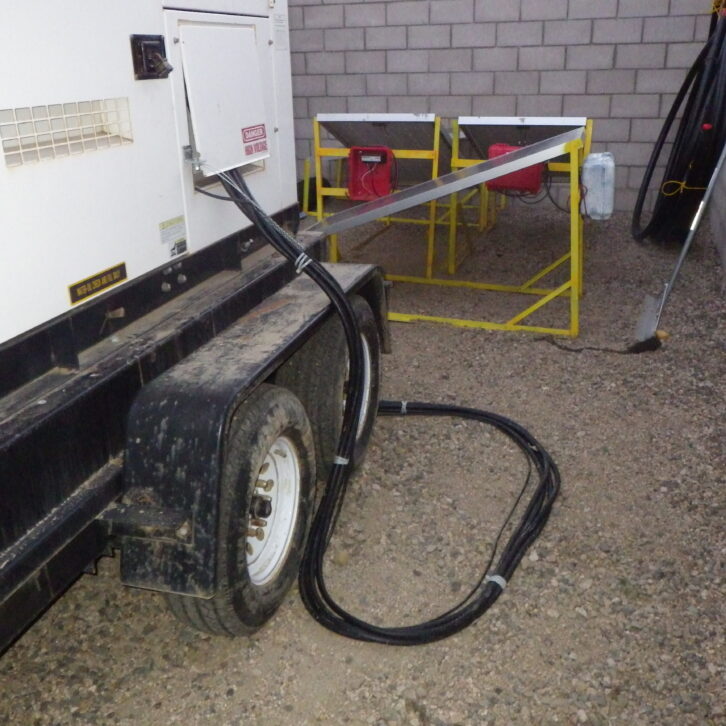
On the afternoon of Dec. 7, at long last, shore power came back on and our generator was able to shut down. Mike Duffy made one last refueling run, topping off the tanks and leaving some extra fuel in drums at the site.
Take 2
The reprieve, however, was short-lived.
Just a couple of days later, SCE performed a public safety shutdown for a couple of days. Fire weather had set in, and we all saw news coverage of the wildfire in Malibu. SCE wanted to avoid sparking a fire in those tinder-box dry, super-windy conditions.
We get quite a few of these public safety shutdowns each year. Utility companies have taken to heart the lessons learned from the 2018 Camp Fire, in which some 85 people lost their lives and more than 18,000 structures were lost. Pacific Gas & Electric was bankrupted by that awful fire, which was sparked by its distribution lines during a fire weather event.
And just a few years later, the Marshall Fire in the north part of the Denver metro area where I live destroyed the towns of Superior and Louisville in Boulder County, killing two and destroying almost 1,000 homes. A sparking Xcel Energy distribution line was strongly suspected as the cause of that fire.
Who can blame these utilities for being proactive during fire weather events?
Thankfully, SCE restored our power a couple of days later when conditions improved, and we were able to get our generator service technician up to the site to perform an oil change and full inspection of the main generator, which had run a lot of hours continuously over two weeks.

He also did a load bank test on the backup generator, which we hold in reserve. The newer backup generator has the same capacity as the older main (70 kW), but being newer it has tighter emission controls, drinks diesel exhaust fluid and will shut down if loaded to capacity. The main will run the site at full power, including MDCL, without an issue; if we’re on the backup we have to reduce power a bit.
More than a backup
All’s well that ends well. We went through some 900 gallons of diesel, which cost us several thousand dollars. We usually spend right at $200 per day to power KBRT from utility power. Running on generator power costs us about $300 a day, not including our expenses in hauling fuel to the site.
This long-term outage cemented in our minds what we already knew: Generator power is primary at that site. We can’t look at our generators as backup equipment. Too often, they are all that stands between us and being off the air for days on end.
That was driven home in the weeks after. The conditions that propagated the Palisade, Eaton and other massive Los Angeles wildfires kept us running on generator during public safety shutdowns triggered by the extreme fire weather. Our 10-day outage late last year was, as it turns out, a dress rehearsal for even more time on generator power.
The author is director of director of engineering for Crawford Broadcasting.
